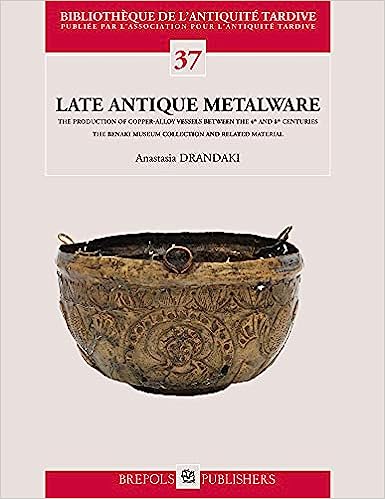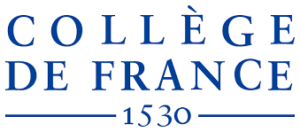Late Antique Metalware. The Production of Copper-Alloy Vessels between the 4th and 8th Centuries The Benaki Museum Collection and Related Material

Bibliothèque de l’Antiquité Tardive 37
2020
A. Drandaki
The book examines the fourth- to eighth-century copper alloy wares in the Benaki Museum, using them as the basis on which a wider debate about the production, circulation and use of copper vessels in Late Antiquity.
The book examines the fourth- to eighth-century copper alloy wares in the Benaki Museum, using them as the basis on which a wider debate about the production, circulation and use of copper vessels in Late Antiquity can be built. It is an attempt at a holistic approach to this rich but as yet little studied material. Apart from the necessary typology and dating, the study also includes systematic discussion of questions regarding the alloys used in the manufacture of the copperwares and the techniques employed in their production and decoration. The study of primary sources provided evidence about the late Roman and Medieval Greek terminology associated with each group of objects, as well as interesting information about the distribution of various types of vessels, the context in which they were used and the value their owners placed on them, while also containing useful references to the coppersmiths themselves.
Most of the Benaki copperwares were acquired on the Egyptian market and can be connected with the rich local production in the Late Roman and Early Islamic period. Yet the study of these artefacts showed that they have striking similarities with a wide range of archaeological material discovered over an extremely large geographical area, from the Eastern Mediterranean to Italy, Germany, Spain and the UK. The geographical spread of copper alloy wares that follow a parallel development in different parts of the empire and also appear almost contemporaneously in Western European burials reignites the debate on the production centres and subsequent modes of distribution of these artefacts. In turn these issues touch on the long-standing debate on the so-called ‘Coptic bronzes’ and the actual role of Egypt in the overall production of and trade in these articles in Late Antiquity.
Anastasia Drandaki is the Curator of the Byzantine Collection at the Benaki Museum, Athens. She has published books and articles on late antique and medieval metalwork, icons and wall paintings, the devotional practices in Byzantium, and the arts of Sinai. She is author of “Greek Icons 14th-18th century: The Rena Andreadis Collection » and has edited “The Origins of El Greco: Icon Painting in Venetian Crete », « Pilgrimage to Sinai » and “Heaven and Earth: Art of Byzantium from Greek Collections (with D. Bakirtzis and A. Tourta).
Table of Contents
Contents
Forewords
Introduction
Part Α.
Types of vessels
1. Small bowls
2. Three-footed bowls
3. Footed bowls
4. Bowls with horizontal handles
5. Bowls with long spouts
6. Bowls with moveable handles
7. Bottles and Ewers
8. Ladles
9. Spoons – forks – strainers
10. Buckets
11. Amphoriskoi
12. Flasks
13. Lighting devices
14. Censers
Part Β.
15. Technical results
16. Workshops
17. Forms and decoration
Conclusions
Sommaire
Appendix: Catalogue of the copper alloy vessels in the Benaki Museum Byzantine Collection
Map
Abbreviations – Bibliography
Index
Pour en savoir plus : https://www.brepols.net/products/IS-9782503569413-1




